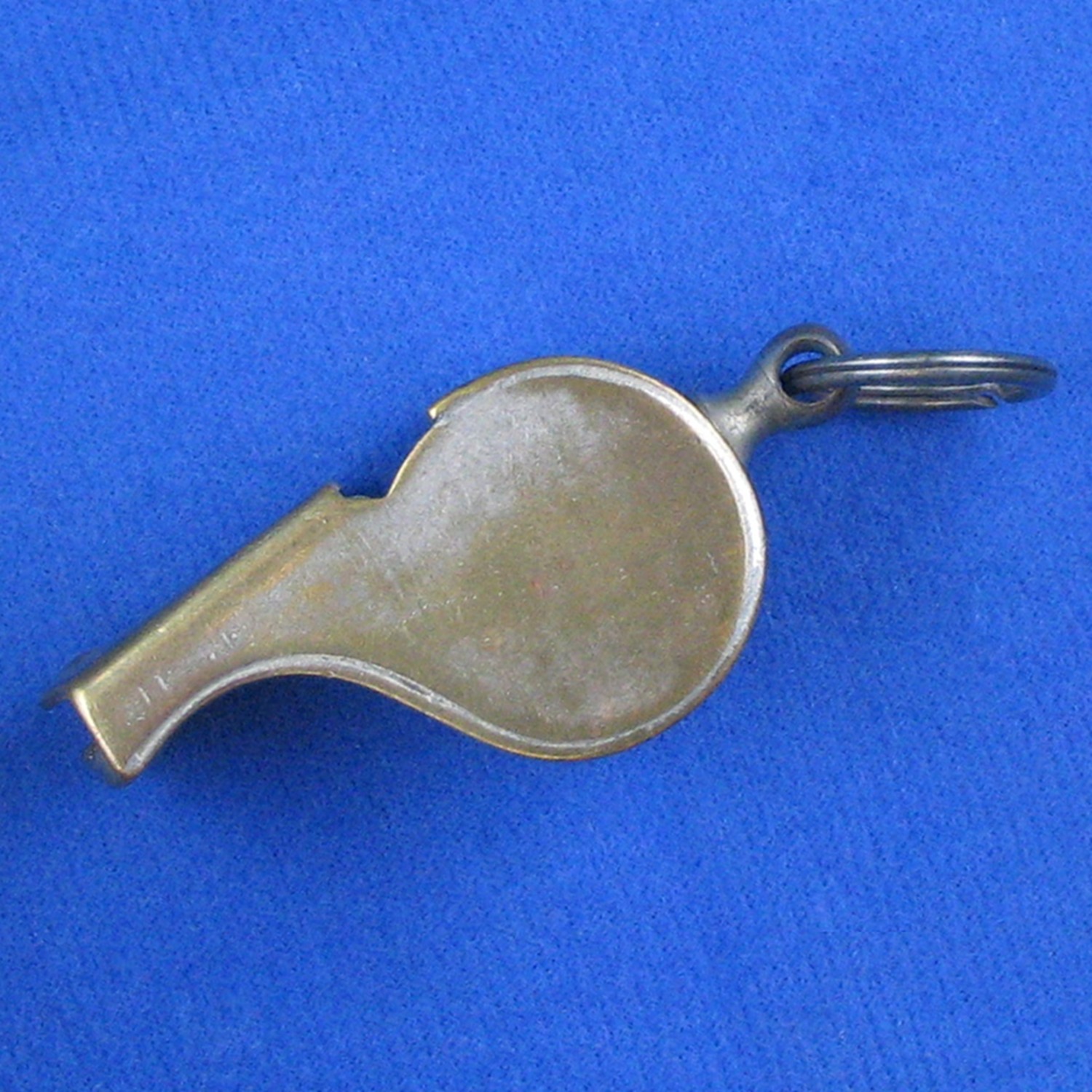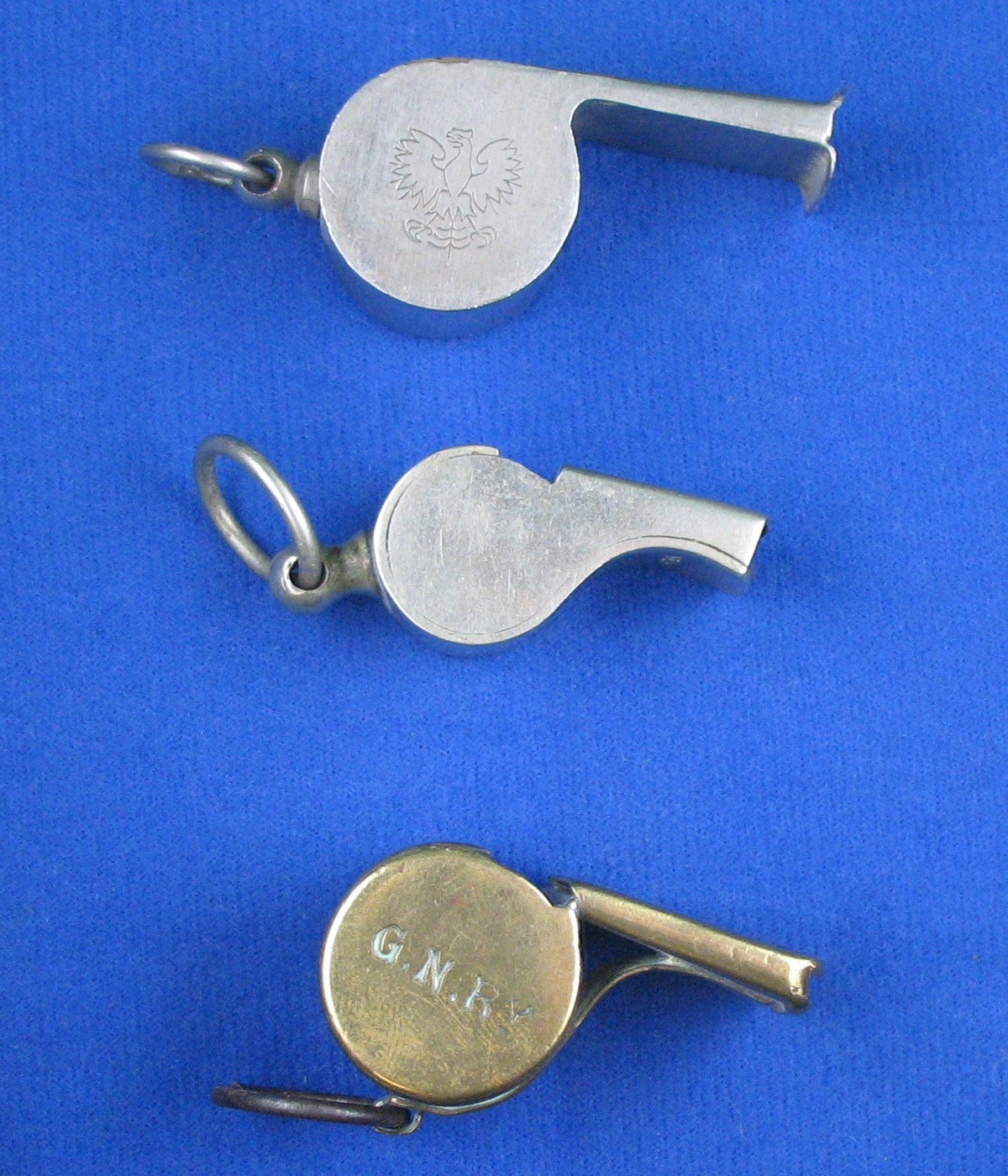Whistle Categories > Escargot Whistles

Where did escargot whistles originate?
The button whistle was as a precursor to the escargot or snail shape whistle and focused on the UK. But Escargots or snail shaped whistles, peripherally came to be manufactured rather rapidly around the world.
The heaviest made escargot whistles would be seen in the UK circa 1880-1890s especially 5 and 6 piece whistles with cast parts, very bulky construction and work intensive. From that early beginning lighter weight models would proliferate, as they do to this day.
How are escargot whistles identified?
Although button whistles could fall within this shape, heavier ones of 6 piece, then 5 piece, then four piece whistles of all cast parts broke the wall from button whistles circa 1880. Then came whistles of mixed cast parts along with pressed metal bodies.
Predictable whistles of less labor arose, eventually leading to the 3 piece whistle of pressed parts in the shape of an escargot or snail that exists down to our day.
So, the shape has remained the same. It appears to look like a snail, or the French word more commonly used is escargot, and it is that name Martyn Gilchrist coined in his studies and publications on whistles from the UK.
Why were they made?
The need for a compact whistle developed into the escargot or snail shape under much trial and error use with button whistles of the early 1800s. Then came modifications with more robust designs which stood up to greater use. Thus, the three piece whistle that has stood the test of time to this day, first patented by Joseph Hudson in 1891, has remained much like its patent date.
It has proven to stand up to great abuse and compact enough for many different markets, including, but not limited to police, fire, military scouting and so forth.

© – All photos with blue background property of The Whistle Gallery reference collection. Please contact The Whistle Gallery for permission of use of any website content. Use of photos without authorization is prohibited.










